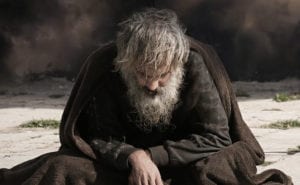2015 is the year we all watched far too much television. In the last few months a host of online subscription streaming services have been made available in Australia, and with them many old favourites are getting the chance to shine again. So if you find yourself sitting in front of your laptop wondering if Dawson’s Creek will be just as good the second time round (it won’t), let me assure you that one show that will be as good or better, on a second, third or fourth viewing is Amy Sherman-Palladino’s Gilmore Girls.
In case you weren’t a woman aged fourteen to thirty four in the early noughties, Gilmore Girls is about a mother, Lorelai, and her daughter, Rory, sixteen years apart in age, both beautiful and witty, champion coffee drinkers and best friends. They’re making it on their own in a small, quirky town, away from the stifling family home they ran away from years ago.

It’s a show that was the best television of its kind (dramedy!) and, I think, still is, rivaling Aaron Sorkin’s The West Wing in its hilarious and fast paced dialogue. The show’s creator and her husband, Daniel Palladino, wrote and directed many of the episodes throughout the show’s first six seasons. It’s extremely quotable, (“How many cups of coffee have you had today?” “None. Plus… five.”) and plainly outshines other female-centred contemporaries like Buffy or Ally McBeal. All that and it has a ridiculously good soundtrack.
But what sets Gilmore Girls apart is that unlike other shows from this era (cough, The O.C., cough) it feels like it wasn’t just written for your gratification. It was written for your education. If it looks like a romantic comedy or a soapy family drama on the surface, scratch a little deeper and I think what you’ll actually find is something a bit like a fable.
Gilmore Girls has lessons to teach. And to help you in your schooling, Sherman-Palladino employs a troupe of comic minor characters who resemble the dopey eyed animal sidekicks you are wont to find in fairy tales, passing judgement or dishing out foreshadowing with the best of them. There’s the aging former chorus line girl Miss Patty (the fairy godmother), the town selectman and stickler for rules, Taylor Doose (the villain), Michel, a snooty French concierge (the lovable grump) and the completely bizarre, routinely injured and always unsuccessful Kirk (the village idiot), to name a few.
While a large part of this show is centred around the romantic interests of both mother and daughter, the major narrative tension lies in Lorelai’s fraught relationship with her wealthy, influential parents. And this makes for great material. In one episode she orders at the local diner, talking at her usual breakneck speed, “Cheeseburger, onion rings, and a list of people who killed their parents and got away with it. I’m looking for heroes.”
One scene has Lorelai reacting to another betrayal by her parents. She’s unsurprised. “You were just being you,” she says. “You couldn’t help it.” She goes on to give them a casual rendition of The Scorpion and the Frog from Aesop’s fables. She points to herself, “Frog,” and then to them, “Scorpion”. This, in a nutshell, is what this show is about: the perils of human nature.
The show is littered with characters struggling against themselves. In the course of the show Rory’s father, Christopher, comes into money and tries to be a father but under the surface is still weak and foolish. Dean, Rory’s first love, is self-righteous and hot-headed, and is ultimately punished by the writers, who let his extramarital affair fizzle out in a depressingly banal sort of way.
A more overt example is Lorelai herself, whose name is lifted from a Germanic legend about a beautiful siren who leads men to their deaths. Lorelai’s four major love interests end up bewitched, abandoned, ruined and heartbroken respectively. But she’s not a villain. In fact, she’s an extremely sympathetic character. She doesn’t mean to break men, but she does. It’s just her nature.
The Palladinos aren’t totally without mercy. While some characters are wholly abandoned to their fate (bye Dean, come back never!), not everyone loses the battle against the worst in themselves. The clear-cut justice you find in real fables is here tempered with some grace. Kirk finds love. Michel becomes a true friend and gets tickets to multiple Celine Dion concerts. Christopher doesn’t get the girl, but turns out to be a decent father to his younger daughter, and Lorelai and her parents find things on which to agree. And while things never really work out in the romance department, Lorelai and Rory always have each other.
While this is obviously a secular show, at times there is something very Christian about how things turn out. In life we behave badly (often very badly) and there are consequences. But in turn, there are many instances in our lives where things should have gone much worse. Our bad decisions don’t always ruin us and often people miraculously forgive us after we’ve mistreated them. In this show, as in life, there is grace. The writers of Gilmore Girls may not have known where this grace comes from, but I think it’s obvious they’ve seen that it’s out there.
Image credit: https://www.flickr.com/photos/47800690@N03/















